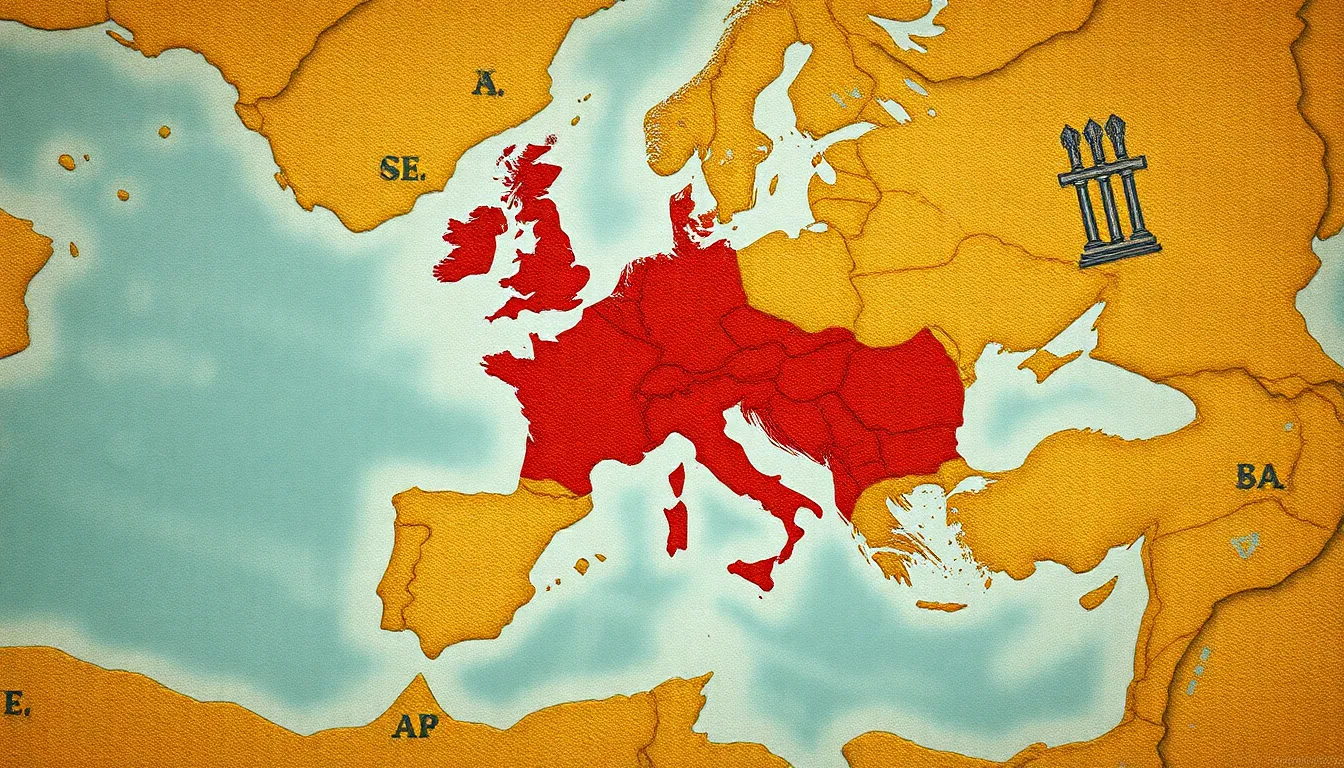The Role of the War Map in Greek Warfare: Myths of Strategy
Introduction
Greek warfare has long captivated historians and enthusiasts alike, revealing not only the martial prowess of its warriors but also the intricate strategies employed by their leaders. As one of the cornerstones of ancient history, the significance of warfare in Greek culture cannot be overstated. Central to many of these strategies was the concept of the war map, an essential tool that provided commanders with vital information about their operational environment. This article explores the importance of war maps in Greek warfare, delving into their historical context, myths, and impact on military strategy.
Historical Context of Greek Warfare
The history of warfare in ancient Greece is rich and varied, characterized by a series of conflicts that shaped the political landscape of the region. From the early city-states to the emergence of powerful leagues, Greek warfare evolved through significant battles and military innovations.
Some key points in Greek warfare history include:
- The Trojan War, blending myth and history.
- The Persian Wars, showcasing the unity of Greek city-states against a common enemy.
- The Peloponnesian War, a protracted conflict that highlighted the strategic prowess of figures like Pericles.
Military innovations during this period included the development of the phalanx formation, improvements in weaponry, and the strategic use of naval power, all of which contributed to the evolution of Greek military strategy.
The Concept of the War Map in Ancient Greece
War maps in ancient Greece served as visual representations of the battlefield and surrounding territories. These maps were crucial for planning military campaigns, understanding terrain, and strategizing troop movements.
Typically, war maps had several intended purposes:
- To illustrate the physical geography of the battlefield.
- To highlight key strategic locations, such as fortifications and resources.
- To document the movements of enemy forces and allied troops.
In terms of materials and techniques, ancient Greek maps were often drawn on materials like papyrus, parchment, or even leather. The Greeks utilized various symbols to denote different geographical features, although the precision of these maps varied significantly based on the cartographer’s skill and the available knowledge of the area.
Myth vs. Reality: The Perception of War Maps in Greek Strategy
Despite the evident importance of war maps, several myths have arisen regarding their use in Greek military strategy. Common misconceptions include the belief that maps were universally accurate or that they were the sole determinant of victory in battles.
To contrast these myths with reality, consider the following:
- Myth: War maps were perfectly accurate and detailed.
- Reality: Many maps were based on limited knowledge and could be quite rudimentary.
- Myth: Generals relied solely on maps for their strategic decisions.
- Reality: Generals combined maps with intelligence reports and firsthand reconnaissance.
Historical evidence suggests that while maps were valuable, they were just one tool among many in a general’s strategic arsenal.
Case Studies: Influential Greek Generals and Their Use of War Maps
Several notable generals in Greek history effectively utilized war maps to inform their strategies and tactics. Two prominent figures stand out:
Alexander the Great
Alexander the Great is renowned for his military genius and innovative strategies. His campaigns across Asia were marked by a keen understanding of geography, which he often mapped out in detail. For instance, before the Battle of Gaugamela in 331 BCE, Alexander studied the terrain and adjusted his formation to exploit the weaknesses of the Persian army.
Pericles
Pericles, the Athenian general during the early stages of the Peloponnesian War, also exemplified the use of war maps in strategy. His approach emphasized the importance of naval superiority, and he utilized maps to plan Athenians’ defensive strategies, notably the use of their fleet to control key maritime routes.
The Role of Geography in Greek Warfare Strategy
The geographical landscape of Greece played a crucial role in shaping military strategy. The region’s mountainous terrain, islands, and coastal areas presented unique challenges and opportunities for commanders.
War maps were instrumental in understanding the following geographical factors:
- Terrain: Maps helped generals identify high ground, choke points, and other tactical features.
- Waterways: Knowledge of rivers, lakes, and coastlines informed naval strategies and supply lines.
- Fortifications: Maps indicated the locations of enemy strongholds and potential sites for siege.
By leveraging geographical advantages, Greek generals could devise strategies that maximized their forces’ effectiveness while minimizing risks.
Evolution of War Maps and Strategic Thought in Hellenistic Greece
The transition from classical to Hellenistic warfare marked significant changes in military thought and the use of war maps. Following the conquests of Alexander the Great, the focus of warfare shifted towards larger scale operations and more complex strategies.
Innovations in mapping technology during this period included:
- Improved cartographic techniques that offered greater detail and accuracy.
- The use of astrolabes and other navigational tools to enhance maritime strategy.
- Incorporation of local knowledge and intelligence into mapping efforts.
The evolution of war maps during the Hellenistic period reflects a broader trend in strategic planning, emphasizing adaptability and comprehensive situational awareness.
Conclusion
In summary, the role of the war map in Greek warfare was multifaceted and critical to the success of military campaigns. From their historical context and intended purposes to the myths that have arisen around them, war maps were integral tools for Greek generals navigating the complexities of strategy and geography. The case studies of influential leaders like Alexander the Great and Pericles illustrate the practical applications of war maps in their campaigns.
Furthermore, the evolution of war maps from classical to Hellenistic Greece highlights the ongoing development of strategic thought in military history. The legacy of war maps continues to resonate in modern military analysis, underscoring the timeless importance of geography and planning in warfare.




